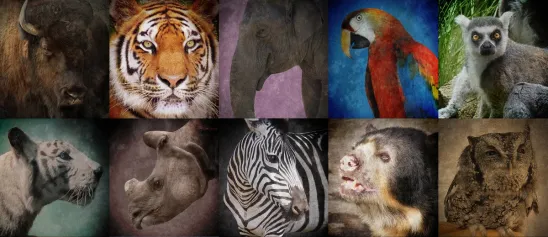The lesser prairie-chicken (LPC) is a grouse that occupies a five-state range, including the western areas of Kansas and Oklahoma, the Texas Panhandle, eastern New Mexico, and southeastern Colorado. As we explained in a previous article, in response to litigation and following a nearly thirty-year history of regulatory listing and delisting, the US Fish and Wildlife Service (FWS or Service) proposed to re-list two distinct population segments (DPS) of the LPC under the Endangered Species Act (ESA) in June, 2021.[1] 86 Fed. Reg. 29,432 (June 1, 2021). The Service has now issued a final rule listing the Southern DPS of the LPC (covering southwest Texas Panhandle and eastern New Mexico) as endangered and the Northern DPS of the LPC (covering southwestern to southcentral Kansas, western Oklahoma, northeast Texas Panhandle, and southeast Colorado) as threatened under the ESA. 87 Fed. Reg. 72,674 (Nov. 25, 2022). The rule becomes effective on January 24, 2023.
Because of the size and location of the LPC’s range, a large swatch of which overlaps with the Permian Basin, the LPC listing is likely to have significant implications for activities in those areas, including agriculture, oil and gas development, renewable energy, and other utility projects. Importantly, the Service notes that construction of new infrastructure and operations and maintenance of existing infrastructure in areas that are already impacted are not expected to result in take of LPC. These areas are not suitable habitat for LPC because the species avoids existing development.
Concurrent with the threatened listing for the northern DPS, FWS issued a 4(d) rule allowing certain activities, primarily benefitting existing farms, to proceed without constituting an ESA Section 9 “take,” provided the provisions of the 4(d) rule are followed. The 4(d) rule, thus, lifts the prohibition against incidental “take” for routine agriculture activities on lands that have been cultivated for at least five years. In addition, it recognizes the value of grazing management and includes an exception for producers following site-specific prescribed grazing plans developed by a qualified party and approved by the FWS. Finally, the 4(d) rule provides an exception for implementation of prescribed burning for grassland management.
Although FWS recognizes that other industrial activities, including oil and gas and wind energy development, occur in the northern DPS LPC range, it does not except those activities from the incidental “take” prohibition in the 4(d) rule. For example, FWS notes that petroleum and natural gas production has occurred over much of the estimated historical and current range of the LPC and can result in both direct and indirect impacts on the species’ habitat. Similarly, FWS states that new wind energy development is likely to occur within LPC habitat in the Great Plains States.
But the Service points to other compliance options for interested parties in the oil and gas and renewable energy sectors to manage their risk of liability for “take.” For example, oil and gas producers within the Northern and Southern DPS that participate in an existing Candidate Conservation Agreement with Assurances (CCAA) have certain regulatory assurances for covered activities on enrolled lands. A CCAA provides participants coverage through a permit with assurances they will not be required to implement additional conservation measures beyond those in the CCAA. According to FWS, there are two existing CCAAs that cover oil and gas development for the LPC in the Southern DPS – one administered by the Center for Excellence of Hazardous Materials Management and the second administered by the Western Association of Fish and Wildlife Agencies. In addition, for those oil and gas projects not enrolled in an CCAA where “take” of the LPC may occur, the project proponents can enroll in a recently approved Oil and Gas Habitat Conservation Plan (HCP) or develop their own HCP. Similarly, FWS notes that potential impacts to LPC from renewable energy projects can be addressed through CCAAs, HCPs, and incidental take permits. For example, renewable energy projects can enroll in a Renewable Energy HCP, which covers the majority of the five-state LPC range. And in 2021, the Service developed Land-Based Wind Energy Guidelines, which may assist developers in minimizing impacts to wildlife while siting projects.
The Service recommends project proponents engage in early consultation with FWS to identify ways to avoid potential conflicts to LPC. FWS states that it is committed to working collaboratively with industry to achieve infrastructure development goals while ensuring compliance with the ESA, and where impacts cannot be avoided, expects that project proponents will be able to enroll in HCPs or work with the Service to develop other ESA compliance mechanisms.
[1] As explained previously, a DPS is a portion of a species’ or subspecies’ population or range that is described geographically rather than biologically. DPSs are intended to allow FWS to tailor listing decisions based on differing circumstances between population portions.





 />i
/>i
